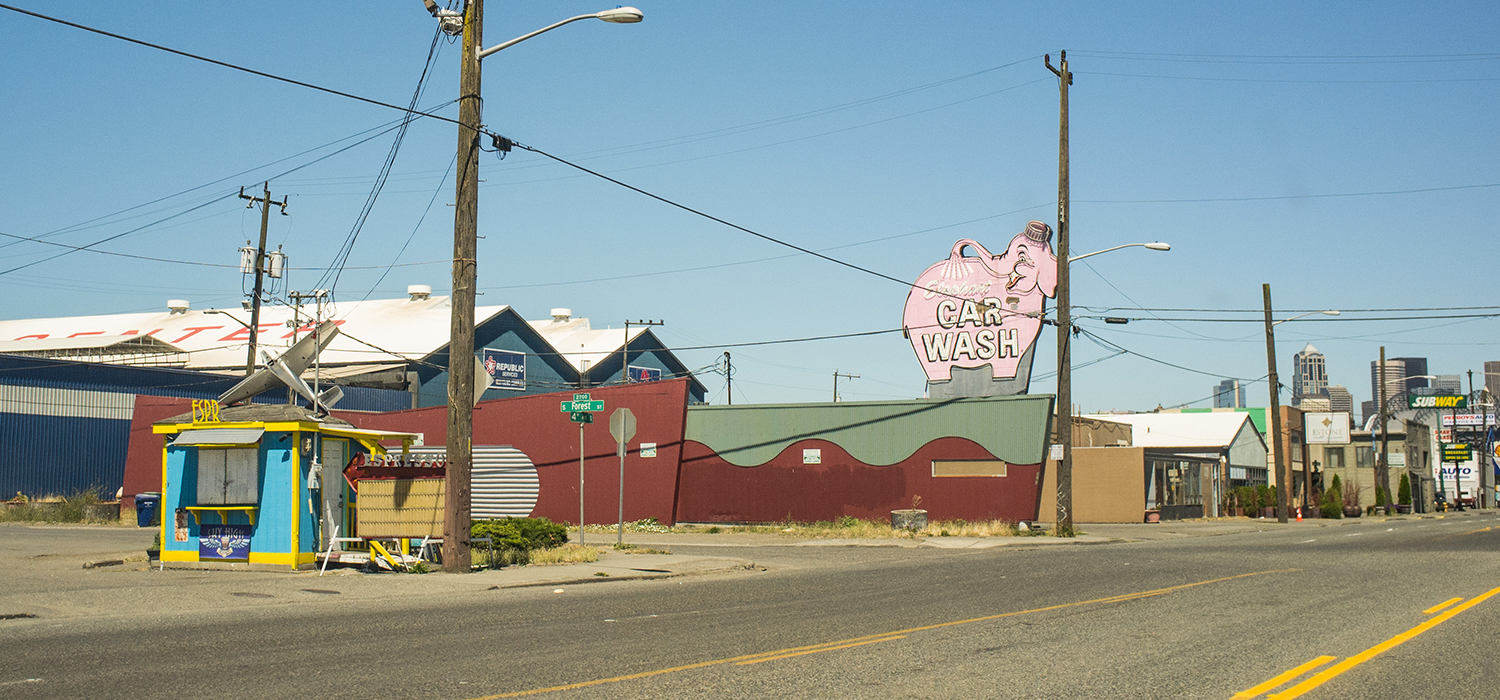
<p>Seattle's SODO neighborhood, which was designated an Opportunity Zone. <a href="https://flickr.com/photos/emmettanderson/9312822743" target="_blank">Seattle SODO Pink Elephant</a> by Emmett Anderson is licensed under CC 2.0, cropped from original.</p>
The Opportunity Zone (OZ) tax incentive is intended to encourage private investment in real estate and businesses in high-poverty or low-to-moderate-income neighborhoods. The Urban Institute’s early research on Opportunity Zones revealed the promise of the incentive, as well as the risk that it could fail to make a difference in many regions and cities.
Opportunity Zones are disproportionately located in communities of color and tend to have higher poverty rates than the national average. There is also a tremendous diversity in OZs, and thus, there is a risk that investors will invest only in the most economically robust zones. The federal regulations governing the incentive allow for a broad range of uses and do not require that investments actually benefit residents.
Recognizing these shortcomings, some cities are enacting policies to help align investments with existing neighborhood plans and mitigate the potential harms of investments in Opportunity Zones, and federal legislators are considering imposing new reporting requirements.
Whether the incentive helps or harms OZ communities depends on where investments occur and the types of investments made. In response, we created a new tool to assess the potential social impacts of Opportunity Zone investments.
How the tool works
The tool begins with a “community goals and priorities” section, where users answer questions about how they engaged the community in project design and decisionmaking.
Next, users rank six impact areas (accessible and high-quality jobs; community wealth building; affordable and accessible housing; environment and open spaces; health, social services, and cultural amenities; and transportation and connectivity) based on their understanding of community priorities. This ranking determines the weight each impact area receives in the final scoring and is meant to underscore that investments should respond to community needs. For example, as valuable as it is, a project which creates affordable housing in a zone where job creation is ranked as the first priority will likely not achieve a top score.
After completing questions about the project in each of the six impact areas, users receive a scorecard that assigns a score scaled from 0 to 100. Projects receiving a high score are expected to provide strong social benefits aligned with community priorities, whereas those that receive a low score are unlikely to provide social benefits and may conflict with or undermine community priorities.
We developed and refined the questions in the tool through an iterative process that included a scan of existing impact tools, interviews with local stakeholders, a workshop with national experts working on Opportunity Zones, and testing with local leaders in five markets across the country.
The tool is currently in beta. Although we tried to account for a wide variety of community priorities and community types, it’s possible that some communities may have priorities that aren’t included in this version or that the tool’s questions don’t adequately reflect all community types. As such, we will use this version to collect information from users to improve the tool.
Who might use the tool
We designed the tool for a wide variety of stakeholders, including project sponsors, investors, community-based organizations, policymakers, local community advocates, and others interested in assessing the community impact of a local project. The tool can serve several purposes:
- Project scores can help direct incentives, support, and funding to projects with potential to advance community priorities, positively affect local residents, and promote inclusive growth in their communities.
- The tool can inform local debate about the best use of public subsidies and other support for projects, especially if stakeholders with different perspectives (e.g., neighborhood advocates, project sponsors, and public leaders) assess the same project and get differing results. Identifying disagreement about community impacts could be the basis for useful dialogue.
- Project sponsors can determine how their project might positively affect the community and where there may be room for improvement.
We hope the tool will spark conversations about how Opportunity Zone investments can support community goals and priorities and increase the ability of residents to shape their communities. Though it should not be the final word on what a good project is, our desire is that, together with other community-led decisionmaking processes, it can be a source for discussion and accountability as communities seek to attract investment to the places that need it most.
Let’s build a future where everyone, everywhere has the opportunity and power to thrive
Urban is more determined than ever to partner with changemakers to unlock opportunities that give people across the country a fair shot at reaching their fullest potential. Invest in Urban to power this type of work.